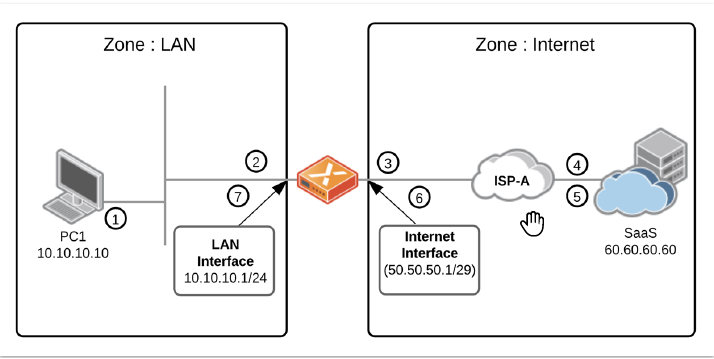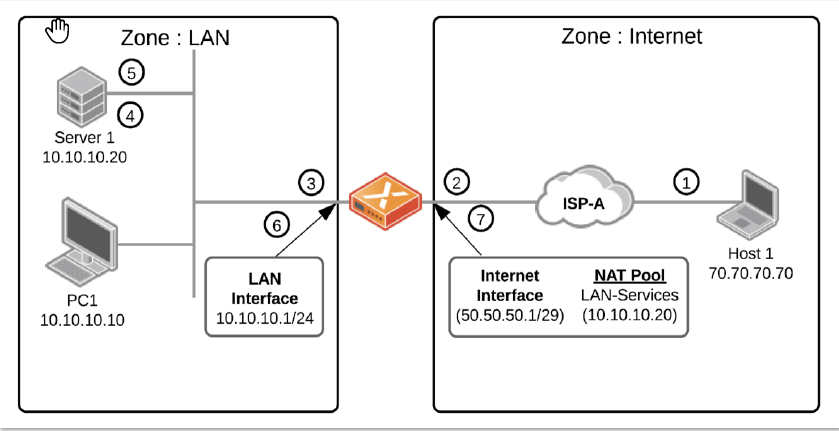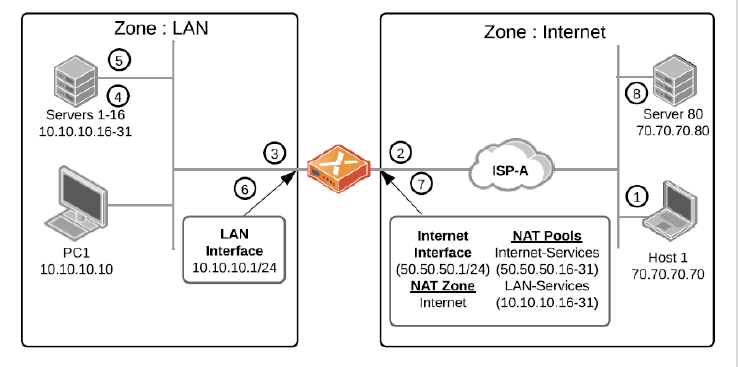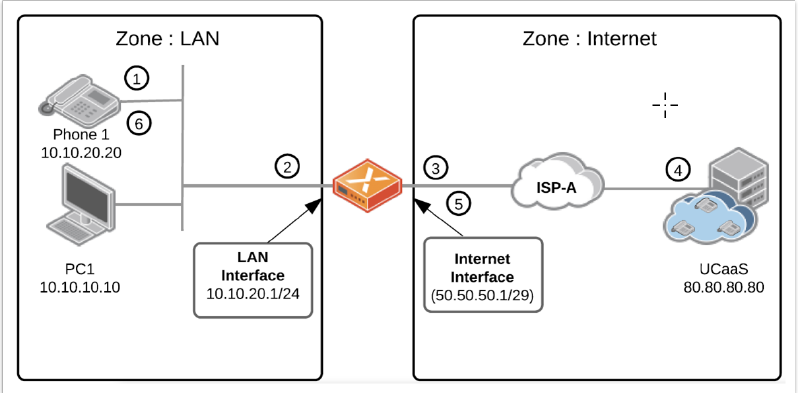Prisma SD-WAN
Use Cases
Table of Contents
Expand All
|
Collapse All
Prisma SD-WAN Docs
-
-
- Prisma SD-WAN Key Elements
- Prisma SD-WAN Releases and Upgrades
- Use Copilot in Prisma SD-WAN
- Prisma SD-WAN Summary
- Prisma SD-WAN Application Insights
- Device Activity Charts
- Site Summary Dashboard
- Prisma SD-WAN Predictive Analytics Dashboard
- Prisma SD-WAN Link Quality Dashboard
- Prisma SD-WAN Subscription Usage
-
-
- Add a Branch
- Add a Data Center
- Add a Branch Gateway
- Secure Group Tags (SGT) Propagation
- Configure Circuits
- Configure Internet Circuit Underlay Link Aggregation
- Configure Private WAN Underlay Link Quality Aggregation
- Configure Circuit Categories
- Configure Device Initiated Connections for Circuits
- Add Public IP LAN Address to Enterprise Prefixes
- Manage Data Center Clusters
- Configure Secure SD-WAN Fabric Tunnels between Data Centers
- Configure a Site Prefix
- Configure Ciphers
- Configure a DHCP Server
- Configure NTP for Prisma SD-WAN
- Configure the ION Device at a Branch Site
- Configure the ION Device at a Data Center
- Switch a Site to Control Mode
- Allow IP Addresses in Firewall Configuration
-
- Configure a Controller Port
- Configure Internet Ports
- Configure WAN/LAN Ports
- Configure a Sub-Interface
- Configure a Loopback Interface
- Add and Configure Port Channel Interface
- Configure a PoE Port
- Configure and Monitor LLDP Activity and Status
- Configure a PPPoE Interface
- Configure a Layer 3 LAN Interface
- Configure Application Reachability Probes
- Configure a Secondary IP Address
- Configure a Static ARP
- Configure a DHCP Relay
- Configure IP Directed Broadcast
- VPN Keep-Alives
-
- Configure Prisma SD-WAN IPFIX
- Configure IPFIX Profiles and Templates
- Configure and Attach a Collector Context to a Device Interface in IPFIX
- Configure and Attach a Filter Context to a Device Interface in IPFIX
- Configure Global and Local IPFIX Prefixes
- Flow Information Elements
- Options Information Elements
- Configure the DNS Service on the Prisma SD-WAN Interface
- Configure SNMP
-
-
- Prisma SD-WAN Branch Routing
- Prisma SD-WAN Data Center Routing
-
- Configure an OSPF in Prisma SD-WAN
- Enable BGP for Private WAN and LAN
- Configure BGP Global Parameters
- Global or Local Scope for BGP Peers
- Configure a Route Map
- Configure a Prefix List
- Configure an AS Path List
- Configure an IP Community List
- View Routing Status and Statistics
- Distribution to Fabric
- Host Tracking
-
- Configure Multicast
- Create, Assign, and Configure a WAN Multicast Configuration Profile
- Configure Global Multicast Parameters
- Configure a Multicast Static Rendezvous Point (RP)
- Learn Rendezvous Points (RPs) Dynamically
- View LAN Statistics for Multicast
- View WAN Statistics for Multicast
- View IGMP Membership
- View the Multicast Route Table
- View Multicast Flow Statistics
- View Routing Statistics
-
- Prisma SD-WAN Branch HA Key Concepts
-
- Configure Branch HA with Gen-1 Platforms (2000, 3000, 7000, and 9000)
- Configure Branch HA with Gen-2 Platforms (3200, 5200, and 9200)
- Configure Branch HA with Gen-2 Embedded Switch Platforms (1200-S or 3200-L2)
- Configure Branch HA for Devices with Software Cellular Bypass (1200-S-C-5G)
- Configure Branch HA for Platforms without Bypass Pairs
- Configure Branch HA in a Hybrid Topology with Gen-1 (3000) and Gen-2 (3200) Platforms
- Configure HA Groups
- Add ION Devices to HA Groups
- Edit HA Groups and Group Membership
- Prisma SD-WAN Clarity Reports
-
-
CloudBlade Integrations
- CloudBlade Integrations
- CloudBlades Integration with Prisma Access
-
-
-
-
- clear app-engine
- clear app-map dynamic
- clear app-probe prefix
- clear connection
- clear device account-login
- clear dhcplease
- clear dhcprelay stat
- clear flow and clear flows
- clear flow-arp
- clear qos-bwc queue-snapshot
- clear routing
- clear routing multicast statistics
- clear routing ospf
- clear routing peer-ip
- clear switch mac-address-entries
- clear user-id agent statistics
-
- arping interface
- curl
- ping
- ping6
- debug bounce interface
- debug bw-test src-interface
- debug cellular stats
- debug controller reachability
- debug flow
- debug ipfix
- debug log agent eal file log
- debug logging facility
- debug logs dump
- debug logs follow
- debug logs tail
- debug performance-policy
- debug poe interface
- debug process
- debug reboot
- debug routing multicast log
- debug routing multicast pimd
- debug servicelink logging
- debug tcpproxy
- debug time sync
- dig dns
- dig6
- file export
- file remove
- file space available
- file tailf log
- file view log
- ssh6 interface
- ssh interface
- tcpdump
- tcpping
- traceroute
- traceroute6
-
- dump appdef config
- dump appdef version
- dump app-engine
- dump app-l4-prefix table
- dump app-probe config
- dump app-probe flow
- dump app-probe prefix
- dump app-probe status
- dump auth config
- dump auth status
- dump banner config
- dump bfd status
- dump bypass-pair config
- dump cellular config
- dump cellular stats
- dump cellular status
- dump cgnxinfra status
- dump cgnxinfra status live
- dump cgnxinfra status store
- dump config network
- dump config security
- dump controller cipher
- dump controller status
- dump device accessconfig
- dump device conntrack count
- dump device date
- dump device info
- dump device status
- dump dhcp-relay config
- dump dhcprelay stat
- dump dhcp-server config
- dump dhcp-server status
- dump dhcpstat
- dump dnsservice config all
- dump dpdk cpu
- dump dpdk interface
- dump dpdk port status
- dump dpdk stats
- dump flow
- dump flow count-summary
- dump interface config
- dump interface status
- dump interface status interface details
- dump interface status interface module
- dump intra cluster tunnel
- dump ipfix config collector-contexts
- dump ipfix config derived-exporters
- dump ipfix config filter-contexts
- dump ipfix config ipfix-overrides
- dump ipfix config prefix-filters
- dump ipfix config profiles
- dump ipfix config templates
- dump lldp
- dump lldp config
- dump lldp info
- dump lldp stats
- dump lldp status
- dump log-agent eal conn
- dump log-agent eal response-time
- dump log-agent eal stats
- dump log-agent config
- dump log-agent iot snmp config
- dump log-agent iot snmp device discovery stats
- dump log-agent ip mac bindings
- dump log-agent neighbor discovery stats
- dump log-agent status
- dump ml7 mctd counters
- dump ml7 mctd session
- dump ml7 mctd version
- dump nat counters
- dump nat6 counters
- dump nat summary
- dump network-policy config policy-rules
- dump network-policy config policy-sets
- dump network-policy config policy-stacks
- dump network-policy config prefix-filters
- dump overview
- dump performance-policy config policy-rules
- dump performance-policy config policy-sets
- dump performance-policy config policy-set-stacks
- dump performance-policy config threshold-profile
- dump poe system config
- dump poe system status
- dump priority-policy config policy-rules
- dump priority-policy config policy-sets
- dump priority-policy config policy-stacks
- dump priority-policy config prefix-filters
- dump probe config
- dump probe profile
- dump radius config
- dump radius statistics
- dump radius status
- dump reachability-probe config
- dump qos-bwc config
- dump reachability-probe status
- dump routing aspath-list
- dump routing cache
- dump routing communitylist
- dump routing multicast config
- dump routing multicast igmp
- dump routing multicast interface
- dump routing multicast internal vif-entries
- dump routing multicast mroute
- dump routing multicast pim
- dump routing multicast sources
- dump routing multicast statistics
- dump routing multicast status
- dump routing ospf
- dump routing peer advertised routes
- dump routing peer config
- dump routing peer neighbor
- dump routing peer received-routes
- dump routing peer routes
- dump routing peer route-via
- dump routing peer status
- dump routing peer route-json
- dump routing prefixlist
- dump routing prefix-reachability
- dump routing route
- dump routing routemap
- dump routing running-config
- dump routing summary
- dump routing static-route reachability-status
- dump routing static-route config
- dump routing vpn host tracker
- dump security-policy config policy-rules
- dump security-policy config policy-set
- dump security-policy config policy-set-stack
- dump security-policy config prefix-filters
- dump security-policy config zones
- dump sensor type
- dump sensor type summary
- dump serviceendpoints
- dump servicelink summary
- dump servicelink stats
- dump servicelink status
- dump site config
- dump snmpagent config
- dump snmpagent status
- dump software status
- dump spoke-ha config
- dump spoke-ha status
- dump standingalarms
- dump static-arp config
- dump static host config
- dump static routes
- dump support details
- dump-support
- dump switch fdb vlan-id
- dump switch port status
- dump switch vlan-db
- dump syslog config
- dump syslog-rtr stats
- dump syslog status
- dump time config
- dump time log
- dump time status
- dump troubleshoot message
- dump user-id agent config
- dump user-id agent statistics
- dump user-id agent status
- dump user-id agent summary
- dump user-id groupidx
- dump user-id group-mapping
- dump user-id ip-user-mapping
- dump user-id statistics
- dump user-id status
- dump user-id summary
- dump user-id useridx
- dump vlan member
- dump vpn count
- dump vpn ka all
- dump vpn ka summary
- dump vpn ka VpnID
- dump vpn status
- dump vpn summary
- dump vrf
- dump waninterface config
- dump waninterface summary
-
- inspect app-flow-table
- inspect app-l4-prefix lookup
- inspect app-map
- inspect certificate
- inspect certificate device
- inspect cgnxinfra role
- inspect connection
- inspect dhcplease
- inspect dhcp6lease
- inspect dpdk ip-rules
- inspect dpdk vrf
- inspect fib
- inspect fib-leak
- inspect flow-arp
- inspect flow brief
- inspect flow-detail
- inspect flow internal
- inspect interface stats
- inspect ipfix exporter-stats
- inspect ipfix collector-stats
- inspect ipfix app-table
- inspect ipfix wan-path-info
- inspect ipfix interface-info
- inspect ip-rules
- inspect ipv6-rules
- inspect lqm stats
- inspect memory summary
- inspect network-policy conflicts
- inspect network-policy dropped
- inspect network-policy hits policy-rules
- inspect network-policy lookup
- inspect performance-policy fec status
- inspect policy-manager status
- inspect policy-mix lookup-flow
- inspect priority-policy conflicts
- inspect priority-policy dropped
- inspect priority-policy hits default-rule-dscp
- inspect priority-policy hits policy-rules
- inspect priority-policy lookup
- inspect performance-policy incidents
- inspect performance-policy lookup
- inspect performance-policy hits analytics
- inspect process status
- inspect qos-bwc debug-state
- inspect qos-bwc queue-history
- inspect qos-bwc queue-snapshot
- inspect routing multicast fc site-iface
- inspect routing multicast interface
- inspect routing multicast mroute
- inspect security-policy lookup
- inspect security-policy size
- inspect switch mac-address-table
- inspect system arp
- inspect system ipv6-neighbor
- inspect system vrf
- inspect vrf
- inspect wanpaths
-
-
5.6
- 5.6
- 6.1
- 6.2
- 6.3
- 6.4
- 6.5
- New Features Guide
- On-Premises Controller
- Prisma SD-WAN CloudBlades
- Prisma Access CloudBlade Cloud Managed
- Prisma Access CloudBlade Panorama Managed
-
- Features Introduced in Prisma SD-WAN ION Release 5.6
- Changes to Default Behavior in Prisma SD-WAN ION Release 5.6
- Upgrade ION 9000 Firmware for Device Version 5.6.x
- CLI Commands in Prisma SD-WAN ION Release 5.6
- Addressed Issues in Prisma SD-WAN ION Release 5.6
- Known Issues in Prisma SD-WAN ION Release 5.6
Use Cases
Learn the Prisma SD-WAN NAT policies use cases.
| Where Can I Use This? | What Do I Need? |
|---|---|
|
|
Prisma SD-WAN provides details and examples
of the following topologies:
- Default Source NAT
- Destination NAT
- Static NAT
- ALG Disable
Default Source NAT
By default, Prisma SD-WAN provides an out-of-the-box
configuration that automatically performs Source NAT on traffic destined directly to
public internet interfaces.

| Fields | Description |
|---|---|
| 1 |
A new flow source is from Host PC1 with a source address of
10.10.10.10 and a destination address of 60.60.60.60.
|
| 2 |
A packet arrives at the ION device’s LAN Interface. A policy
lookup and a path selection decision perform to put the traffic
on the link to ISP A.
|
| 3 |
Place the packet onto the internet segment; the
Default-NATPolicySet matches against the
Default-InternetRule.
This rule contains the following configuration:
In this rule:
Apply the packet's policy; the source address of 10.10.10.10
overwrites by the address bound to the Internet Interface
(50.50.50.1). The source port changes to a random port
during this operation. In this example the original packet: (s) 10.10.10.10:12345: (d)
60.60.60.60:443. Is rewritten to: (s) 50.50.50.1:54321: (d)
60.60.60.60:443.
|
| 4 |
Traffic arrives at the internet-based SaaS application.
|
| 5 |
Traffic returns to the destination of 50.50.50.1:54321.
|
| 6 |
Traffic arrives at the ION device's internet interface, where a
translation table check is performed on the flow to ensure that
there is an active connection.
|
| 7 |
Establish the traffic onto the LAN segment; the destination IP
address returns from 50.50.50.1:54321 to 10.10.10.10:12345.
|
Destination NAT
Prisma SD-WAN destination NAT securely permits inbound
connections from the internet to access internal private IP resources at a branch
site location.
One of the use cases involves physical security monitoring services that
require direct inbound connections from the internet and outbound connections from
the local device, often implemented with a dedicated 1:1 NAT configuration.
In this example, the external system Host 1 needs to communicate with Server 1 in the
branch location across the internet. For Host 1, the IP address for the branch
service is 50.50.50.2 and port 443.

| Fields | Description |
|---|---|
| 1 |
A new flow source from Host 1 with a source address of
70.70.70.70 and a destination address of 50.50.50.2.
|
| 2 |
The packet arrives at the ION device's internet interface. It
performs the policy lookup and the traffic on the LAN path.
|
| 3 |
Place the packet onto the LAN segment and match it against the
recently created NAT Policy Rule.
This rule contains the following configuration:
The NAT Pool LAN-Services define as 10.10.10.20 - 10.10.10.20 on
the branch ION device.
NAT Pools are defined in persisting ranges and can be
configured through the NAT Policy UI or directly through the
device-level interface configuration. As the policy applies to the packet, the original destination
address is 50.50.50.2, overwrites by the NAT Pool LAN-Services
address. In this example the original packet (s)
70.70.70.70:12345: (d) 50.50.50.2:443. Is rewritten to: (s)
70.70.70.70:12345: (d) 10.10.10.20:443.
|
| 4 |
Traffic arrives on the LAN at the server hosting inbound services
from the internet.
|
| 5 |
Sends the return traffic to the destination of
70.70.70.70:12345.
|
| 6 |
Traffic arrives at the ION device's LAN interface, where a
translation table check is performed on the flow to ensure that
there is an active connection.
|
| 7 |
Establish the traffic onto the LAN segment, the source IP address
is rewritten from 10.10.10.10:443 to 50.50.50.2:443.
If traffic that originates from Server 1 (10.10.10.20) also
needs to be translated to 50.50.50.2 and a corresponding
Source NAT Rule is configured. |
Static NAT
Prisma SD-WAN provides scenarios that require a 1:1
mapping of a range of IP addresses to another range of IP addresses.
Scenarios include direct mapping of a publicly routable range of IP addresses to RFC
1918 addresses. For example, they translate 50.50.50.16-31 to 10.10.10.16-31 in a
1:1 manner where traffic would translate to 50.50.50.20 to 10.10.10.20 and vice
versa across the entire IP range.
Another common scenario would be when IP prefix overlap occurs due to a company
merger. In this situation, it would also translate the IP addresses bound to the
hosts in a 1:1 manner from one RFC 1918 range to another RFC 1918m range.
In this example, application requirements specify that each internal server must have
a unique internet IP address. Each server must initiate connections on ephemeral
ports and receive inbound links on the same persistent IP address on port 443. To
enable this most efficiently, use static source NAT and static destination NAT.

Case: Inbound connection from the Internet
| Fields | Description |
|---|---|
| 1 |
A new flow source from Host 1 with a source address of
70.70.70.70 and a destination address of 50.50.50.20.
|
| 2 |
A packet arrives at the ION device's internet interface. Perform
a policy lookup and the traffic on the LAN segment.
|
| 3 |
Place the packet onto the LAN segment; it matches against the
recently created NAT Policy Rule.
This rule contains the following configuration:
The NAT Pool LAN-Services is defined as 10.10.10.16 - 10.10.10.31
on the branch ION device. It can be configured through the NAT
Policy UI or directly on the interface configuration of the
device.
NAT Pools are in contiguous ranges. As the policy applies to the packet, the original destination
address of 50.50.50.20 overwrites by the address defined in the
NAT Pool LAN-Services. In this example the original packet: (s)
70.70.70.70:12345: (d) 50.50.50.20:443. Is rewritten to: (s)
70.70.70.70:12345: (d) 10.10.10.20:443.
|
| 4 |
Traffic arrives on the LAN at the server hosting inbound services
from the internet.
|
| 5 |
Sends the return traffic to the destination of
70.70.70.70:12345.
|
| 6 |
Traffic arrives at the ION device's LAN interface, where a
translation table check is performed on the flow to ensure that
there is an active connection.
|
| 7 |
Establish the traffic onto the LAN segment, the source IP address
is rewritten from 10.10.10.10:443 to 50.50.50.2:443.
|
Case: Outbound Connection from the Local Server to an Internet Service
| Fields | Description |
|---|---|
| 5 |
A new flow source from Server 1 with a source address of
10.10.10.20 and a destination address of 70.70.70.80.
|
| 6 |
A packet arrives at the ION device's internet interface. Perform
a policy lookup and the traffic on the LAN segment.
|
| 7 |
Place the packet onto the internet segment; it matches against
the recently created NAT Policy Rule.
This rule contains the following configuration:
The NAT Pool Internet-Services is defined as 50.50.50.50.16 -
50.50.50.50.31 on the branch ION device.
The ION device sends GARP messages and responds to ARP
requests for 50.50.50.16/28. NAT Pools can be configured
through the NAT Policy UI or directly on the interface
configuration and defined in contiguous ranges. As the policy applies to the packet, the original source address
of 10.10.10.20 overwrites by the address defined in the NAT Pool
Internet-Services. In this example the original packet: (s)
10.10.10.20:12345: (d) 70.70.70.80:443. Is rewritten to: (s)
50.50.50.20:12345: (d) 70.70.70.80:443.
|
| 8 |
Traffic crosses the internet and arrives at the destination
server 70.70.70.80. Return traffic processes in the reverse
order, and the ION device references the original outbound
connection previously opened with the Static Source NAT
action.
|
ALG Disable
Prisma SD-WAN application fabric is a critical enabler of
this transition by emphasizing Voice & Video quality reporting and SLA
assurance. As the consumption of these services has changed, it has driven new
demands of the network. Specifically, many UCaaS systems require that network
solution providers disable the SIP ALG (Application Layer Gateway) for any traffic
that crosses a NAT boundary destined for a SIP provider.
In this example, a phone is configured at the branch to communicate with
a UCaaS system on the internet via SIP (Session Initiation Protocol), a standard
protocol used by collaboration endpoints to register with the intended control
system. The SIP traffic (via Path Policy) configures to be placed directly onto any
available internet link. As such, it uses the default NAT policy. The UCaaS provider
has also specified that any SIP ALG must be disabled. Disabling the SIP ALG prevents
issues from occurring that may affect phone registration and 1-way audio.

| Fields | Description |
|---|---|
| 1 |
A new SIP registration source from Phone 1 with a source address
of 10.10.20.20 and a destination address of 80.80.80.80.
|
| 2 |
A packet arrives at the ION device's LAN interface. Perform a
policy lookup and the traffic on the internet segment.
|
| 3 |
Place the packet onto the internet segment; the
Default-NATPolicySet it matches against the
Default-InternetRule.
This rule contains the following configuration:
In this rule, the NAT Pool is blank by default, and the system
uses the IP Address bound to the internet interface.
Apply the packet's policy; the source address of 10.10.10.10
overwrites by the address bound to the Internet Interface
(50.50.50.1), and it might change the source port to a
random port during this operation. In this example the original packet: (s) 10.10.20.20:12345: (d)
80.80.80.80:5060. Is rewritten to: (s) 50.50.50.1:54321: (d)
80.80.80.80:5060.
|
| 4 |
In addition to the default NAT policy, the traffic also matches
the recently created rule to disable the SIP ALG.
|
| 5 |
Traffic arrives at the SIP server directly on the internet.
|
| 6 |
Send the return traffic to the destination of 50.50.50.1:54321. A
translation table check is performed on the flow to ensure that
there is an active connection.
|
| 7 |
Establish the traffic onto the LAN segment; the destination IP
address is rewritten from 50.50.50.1:54321 to
10.10.20.20:12345.
To clone the Default-NATPolicySet, add the appropriate policy
settings and apply this newly created set to the intended
target site(s).When required to change ALG behavior, it is
best practice to create a new Policy Set Stack. Once
created, add the Default-NATPolicySet to the stack, then
create a new NAT Set with a rule that disables ALG. Bind the
new NAT Set to the new NAT Stack. |
